Your Ultimate Guide to What is Website Content Writing in 2021
You believe in the power of content. That’s why you are here!
But unleashing this power in the right way is an art.
And if you are not striving to master this art, you can never win in today’s competition.
If you are trying to survive in today’s turbulent online world, and you read Seth Godin’s words,
“Content marketing is the only marketing left,” it hits you hard.
Because it sounds so real.
You might disagree with the word ‘only,’ but you still can’t deny the staggering significance of content marketing in today’s world – and 70% of marketers do believe in this fact.
With the introduction of the web, things have changed.
That’s what David Meerman Scott says in his book The New Rules of Marketing & PR:
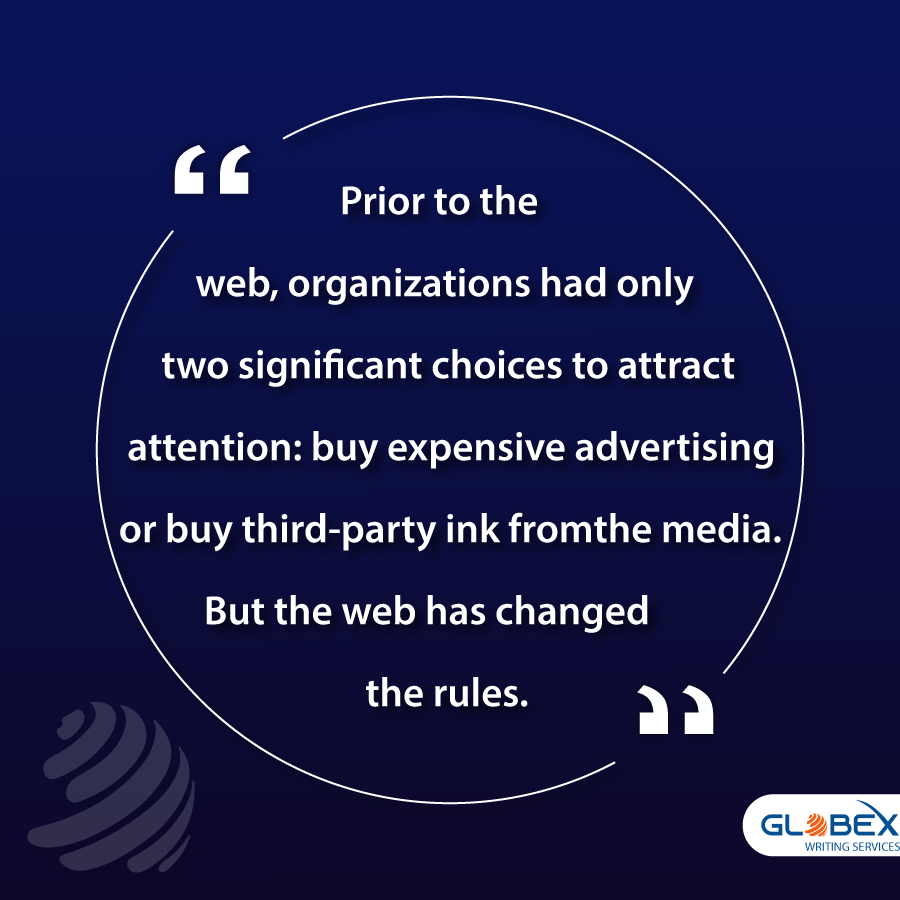

“Prior to the web, organizations had only two significant choices to attract attention: buy expensive advertising or buy third-party ink from the media. But the web has changed the rules.”
Now things have become pretty difficult on so many levels – for the buyers as well as sellers.
Website content writing has taken the central position in the content marketing strategy, and you need to know how it works to attract traffic and boost sales.
What is Website Content Writing?
People say that buying a product online is easier. I don’t second it.
Now the situation has become a lot more difficult. Search for a thing online, and you get hit by numerous queries.
And you don’t know what to do with them…
We all have been there when we wanted to buy a product:
We searched online for that product and got bombarded with several search results.
Instead of making things easier for us, the availability of so many options made things difficult.
That happens with all of us now. You get confused and dazed because you can’t come up with a buying decision due to so many choices.
After some time, a website attracts you, and you make your purchase from there.
So think, what made you fix your decision?
Maybe that website detailed specs of the product in a better way…
Maybe it pitched an important point that others were missing out on…
Or maybe its customer engagement and retention was better than the others…
Whatever was the case, you see, it happened all due to one thing: it’s CONTENT!
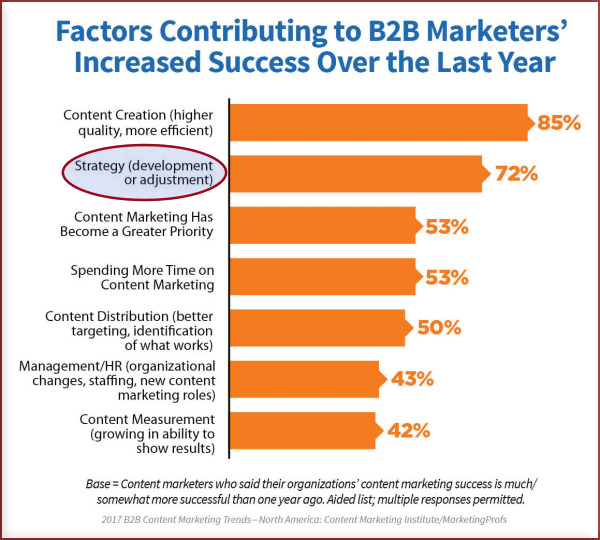

That’s why companies are spending more money on incorporating a robust content strategy in their marketing plan.
And writing content for your website is a part of it!
But here, the problem is that what is a robust content strategy?
Unfortunately, most businesses don’t know the answer to this question.
Most businesses focus their content strategy on getting the best possible ROI.
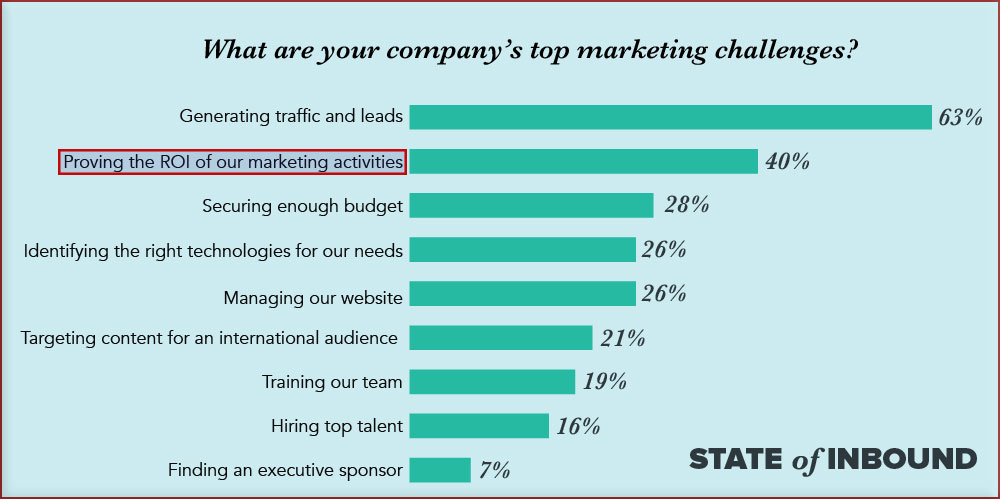

See? Everyone loves bagging more money. And we are okay with it! It’s good that you value your money; all businesses do!
But the results of this love are not always okay!
When you start focusing on just traffic, leads, and sales, you skip an important factor from your content strategy: your buyers.
That’s why things don’t work in your favor.
You are not able to do SEO website content writing that triggers your customers’ emotional appeal, activates brand loyalty, and entices them to make any purchase.
That’s why 60% of marketers find producing engaging content challenging.
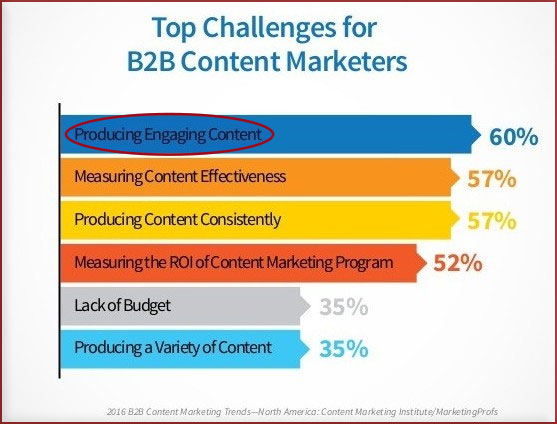

So…
If your content strategy is not doing that, you need to revisit your strategy starting from today – in fact, NOW!
But the issues don’t end with hiring the best website content writing services.
You also need to be fully involved and informed to get the best results.
Here is how to do content writing for websites that hits your customers on all possible levels.
How to Start Writing Content for Website?
Let’s dig out proven and tested website content writing guidelines that drive results:
STEP 1: Know What you Should Know
If you think that you can write a website’s content by:
- Peeking at the website of your competitors
- Following what they have done
- Tweaking a few things according to your requirements
…and you will get the best results…
…then you are wrong.
Even if you are working in the same industry and targeting the same audiences, you still need to develop a customized website to drive the desired results.
Let’s see two website content writing samples to understand this point:
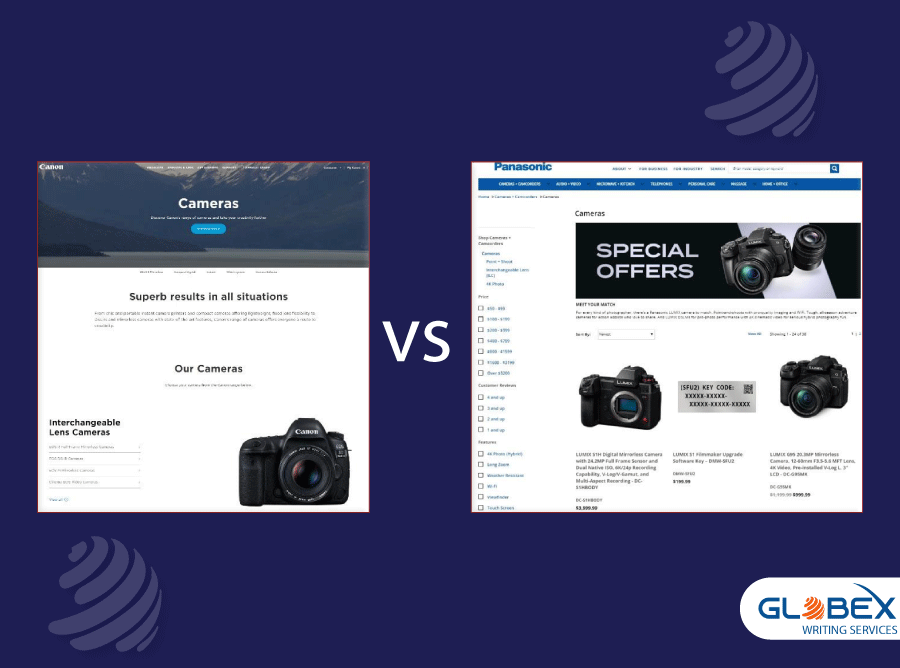

You can see:
These are two websites of different brands.
They are each other’s competitors and are selling cameras. But their websites are different.
They have different…
- Product placement
- Banner styles
- Call to action
Reason?
Because they are two different brands, they have different goals, core ideas, pitching tone, branding, etc. And all these differences need to be reflected in the content of your website.
It means that you can never write a compelling website copy unless you don’t know what you should know, including goals, buyer persona, etc.
POINT # 1: Know Your Goals
The ultimate goal of every business is to sell more!
But sometimes, your primary objective is to…
- Enhance awareness
- Promote a new product
- Establish brand loyalty
- Remodel the branding of your company
- Increase conversion
Whatever is the case, you should be very clear about it if you want to drive the desired results.
Let’s understand the importance of goals with website content writing ideas.
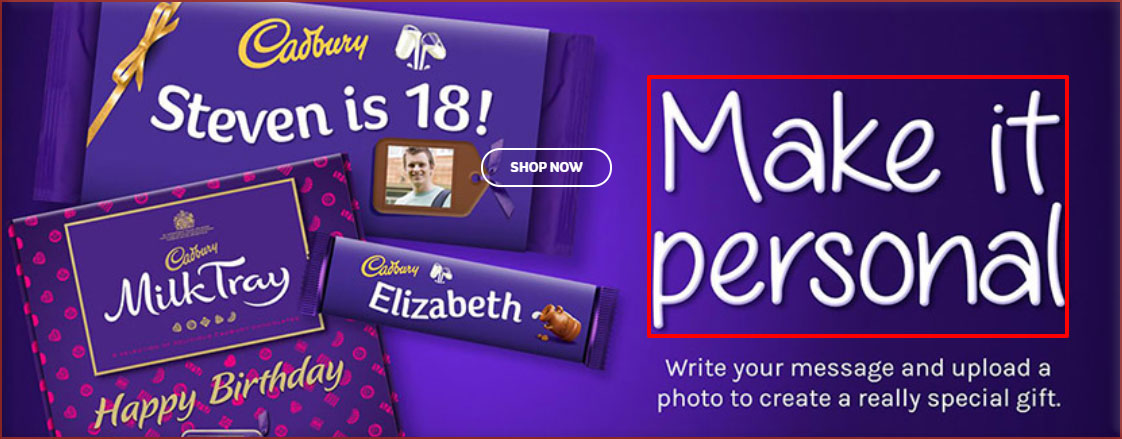

This is the main banner of Cadbury, one of the leading chocolate brands in the world.
Obviously, they want to sell their chocolate. But their banner doesn’t pitch an idea related to selling or anything.
“Make it Personal” message shows that this time, the primary objective of the brand is to raise emotions in the customers and give it a personalized appeal.
So sit with the stakeholders of your company, listen to everyone, chalk out the objectives and direction you want to give to your brand, and reflect it in your content.
POINT 2: Know Your Buyers Persona
If you are like many other marketers, you might think that you produce content for your company.
Wrong!
You produce content for your buyers.
If you don’t know…
Who are your buyers?
What do they want?
What do they expect from you when they approach you?
What are their content consumption patterns?
…you are way behind the scene.
If you analyze the above-mentioned questions carefully, you can judge that knowing the buyer’s persona is not all about collecting their demographic information.
You should know the social status, age, educational background, gender, and income level of your buyers, sure, but knowing their behaviors, needs, and mindset is equally important.
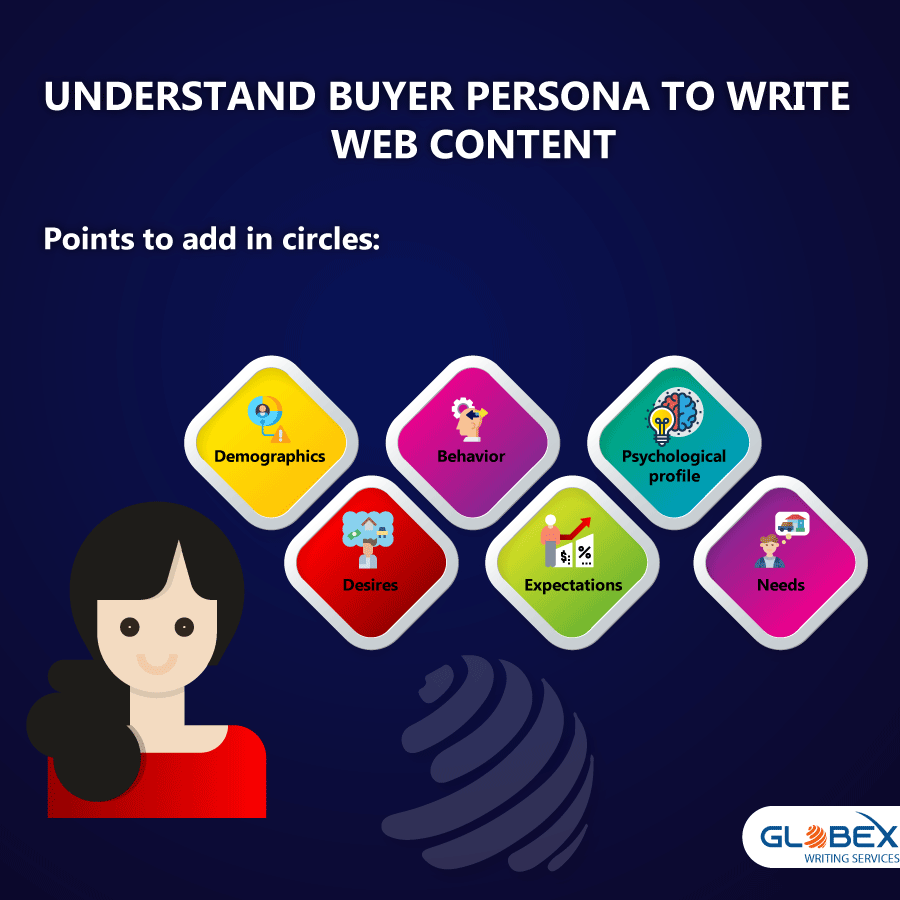

You have the opportunity to attract that 70% of internet users who are seeking content to know about the product instead of traditional advertisements.
But only if you know who they are and what they need.
Now you may ask how to know your buyer’s persona.
Obviously, you can’t go door-to-door and ask them to give you information about themselves.
You can conduct…
- Surveys
- Usability tests
…and check:
- Feedbacks
- User activity
- Response to emails
…to know about your audience.
It is not easy, but then nobody has ever said that winning in today’s digital world is easier.
You have to invest your time and effort initially in website design and content writing, but in the long run, it pays off.
According to Abraham Aoyama, President and General Manager of FlowMonitor Customer Insights & Dialogue:
“The company that is most successful is one that listens to customers, what their needs are, and what your brand means to them.”
POINT 3: Know Your Competitors
You can’t surpass anyone until you know what you are competing against.
That’s why you should know about your competitors, not to copy them, but to know…
The way they conduct their business…
Knowing all this is important in four ways:
- You can learn what you are missing out on
- You can find where they are lacking
- You can get points to fine-tune your own strategy
- You can also learn what you are competing against
Who are their customers…
Knowing about customers of your competitors can help you:
- Find out if you have the margin to hit your competitor’s customers
- Get an idea of your own customers’ expectations and preferences
- Get points to add in your website content copy to attract qualified customers
The way they handle their customers…
Customer service is important. Know how your competitors are acing out in this department to:
- Find the margin to bring an edge to your customer attention and retention strategy
- Get some tips on how to write a website copy that sells
Their business objectives and plans…
- Try to decode the content and structure of your competitors.
- Chanel their social media pages.
- Study their customer feedback on Google review.
In fact, just like there is a buyers’ persona, there is also a thing like a competitor’s persona.
The buyer’s persona helps you get the most valuable and targeted traffic and leads to your website.
Competitors’ persona helps you stay updated with the market trends, and devise strategies to stay ahead.
So never skip your competitors’ study from your plan before sitting down to do Google website content writing.
STEP 2: Define the Approach of the Content
Once you have a plan in your hand, you get the base for the content production.
But things don’t end here.
After that, you need to define the approach of your content.
One way to define the approach of your content strategy is by considering the “Content Strategy Framework” given by Kristina Halvorson, co-author of the book “Content Strategy for the Web.”


This strategy helps in defining what the content is, how to structure it, and how to drive the content lifecycle.
Substance and structure address what is the content and how to structure it.
Workflow and governance deal with how to drive the content lifecycle.
- Substance: What message are you going to deliver? What would be the tone, style, and voice?
- Structure: How are you going to present the content, and what would be its placement?
- Workflow: The process and resources you need to produce and maintain the content?
- Governance: How to ensure its quality and keep it updated?
STEP 3: Set a Style, Voice, and Tone
No what is website content writing guide is complete without setting a discrete and relatable style, voice, and tone.
Every brand has a style, tone, and voice that need to be reflected in everything – including content.
The content on your website should indicate that it is representing your brand.
You can check all big brands and see that they have a particular voice and tone, and they are true to it.
However, voice and tone are two different things.
Voice is consistent, whereas tone can change according to the context of every content page. But even your tone needs to be particular and reflective of your brand’s ideology and style.
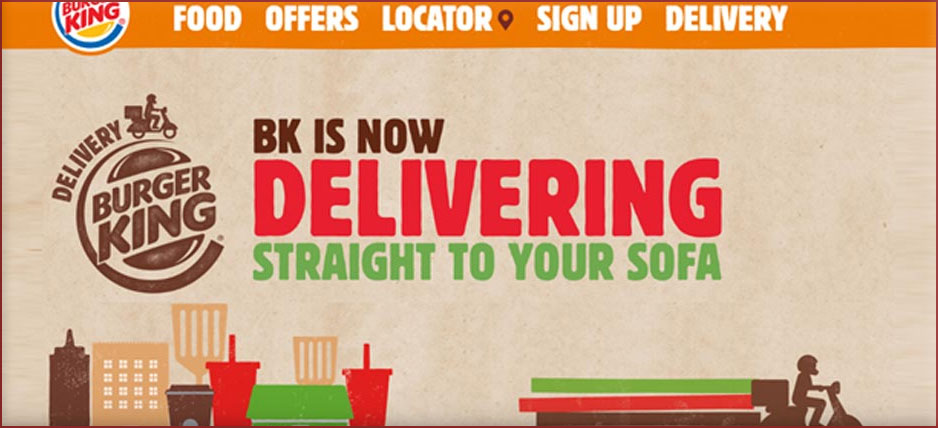

You can see that burger king has a clear voice that is targeting an adult group looking to eat something. And its voice is consistent throughout the website.
You also need to come up with a voice that gives your business a particular and consistent touch to convert it into a brand.
STEP 4: Content Placement Defines the Impact
I have seen many guides on what is website content writing, and to my dismay, most of them don’t talk about the significance of content placement.
The structure of the content, in other words, where you are going to place what type of content defines whether you will be able to…
- Raise desired emotions
- Get the required results
- Trigger goal-oriented actions
First Idea: F – Pattern Design
It is very significant that you place the content according to people’s content consumption patterns.
According to research by Nielsen Norman Group, people’s web content reading pattern is F-shaped.


It has three components:
- First, the user’s eyes move in a horizontal pattern, scanning the upper portion – forming the first horizontal bar of the F.
- Next, scrolling down, consumers’ eyes move in a second horizontal pattern – forming the second bar of the F.
- Lastly, consumers’ eyes move in a vertical pattern – forming the vertical bar of the F.
This pattern can sometimes vary, taking the E or L shape, but the F pattern is the dominant consumption pattern.
So placing your content according to this pattern increases the chances of your content getting read.
Second Idea: Slippery Slide
Every content writer writes content to be read. But not every content is read!
Why?
Because getting the attention, retaining that attention, and engaging readers till the end is not easy. Not in the digital world!
No matter how much you invested in web designing or how unique content you produced, if you can’t compel readers to read, nothing will count.
That’s where the idea of Slippery Slide, given by Joseph Sugarman in The Adweek Copywriting Handbook, jumps in for your rescue.
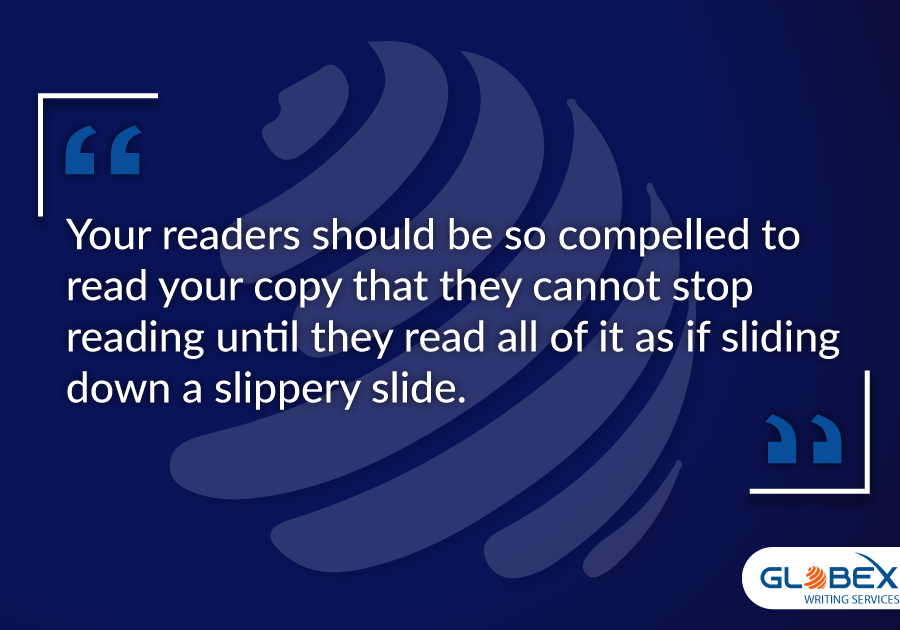

Now, if you don’t mind recalling your childhood, you know how a slide works: sit on the upper edge, move forward, and you will slide down – smoothly!
Let’s understand this concept through website content writing examples of a brand’s home page.
The home page of Smart Slider 3 is an excellent example of slippery slider content.
It gives a catchy introductory punch and pushes visitors to scroll down to know more.
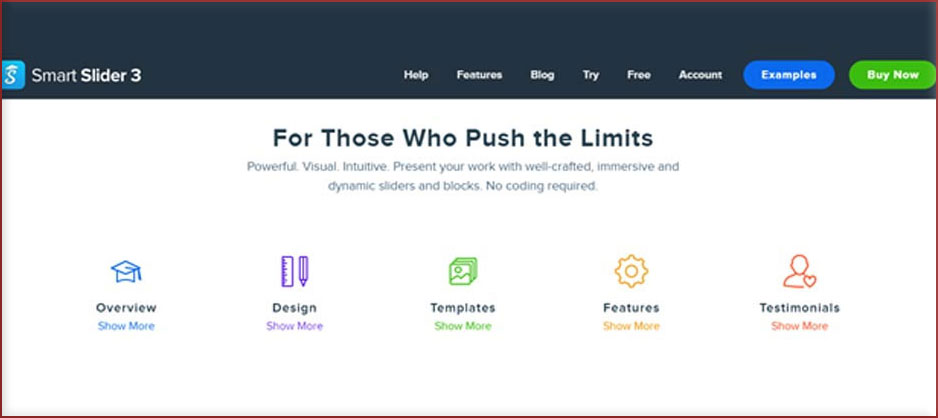

They have kept the content precise. Good!
But short content is not the rule-of-thumb to attract readers. Some websites are information loaded, but they are still loved by the folks.
Why?
Because their content is engaging and interesting, so their visitors don’t mind going through lengthy pieces of information.
Third Idea: 5Ws & 1H
Your customers visit your page with the hope that you will provide the answer to their questions:
- Why: Why should they buy your products/services?
- What: What are you selling and its benefits?
- Who: Who is behind the business?
- Where: Where can they contact you?
- When: When will they see the results of your product?
- How: How are you different from others?
Every visitor visits your page with certain questions lingering in the back of his mind.
It can be just one question or all of them. Your job is to cover as many possible questions as you can.
These are the questions to ask when writing website content.
Marcus Sheridan of They Ask, you Answer! says about answering your customers’ questions as,
“…really answering the question, including deep explanations while approaching each with a “teacher’s” mentality – without bias and trying only to educate the reader.”
That’s how Marcus Sheridan became from a wrecked Pool Guy to one of the best-selling authors and speakers of the content marketing field:
By giving answers to his customers’ questions.
No matter which industry you belong to or what services you provide, your customers are always loaded with questions.
Knowing those questions and then answering them from a buyers’ perspective in your web copy can give an ultimate edge on your competitors without trying much.
Fourth Idea: AIDA Formula
The AIDA formula is one of the most loved formulae in the world of web copywriting.
Because it is the perfect depiction of a marketer’s desire: trigger customers to go for the action.
A consumer’s journey goes through four basic stages:
- Awareness
- Interest
- Desire
- Action
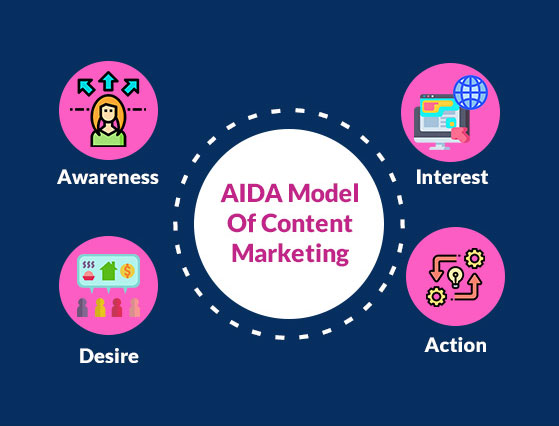

And that’s what the AIDA formula is!
Here is a real-life example:

Be Conversational
Write a web copy as you are talking to your customers.
Customers don’t visit your website because they want to increase your sales and grow your business.
They visit your site because they want to fulfill their needs.
Marcus Sheridan calls it a digital paradox that we give consumers what we want to say, forgetting what customers need.
“It’s a digital paradox of sorts.
As consumers, we expect to be fed great information.
As businesses, we like to talk about ourselves.
It is contrary to building trust.”
You don’t have to come up with fancy words and mind-boggling sentence structure to create impactful website design content writing.
In fact, Marcus Sheridan calls content marketing as,
“…simply the act of teaching and problem-solving so as to earn buyer trust.”
Just like an effective teaching method is simple, clear, and conversational. Similarly, pull these factors in your website’s content for better results.
Conversational websites…
- Give users a personalized experience
- Build trust and loyalty
- Develop interest and engagement


Buzzworthy Studio’s contact page is a good example of a conversational website.
It is simple, yet it gives a feeling that a real person is talking to you rather than a machine. And that’s what today’s people want: a personalized experience.
Give it to them!
STEP 5: Key Elements You Can’t Miss Out On
Every website should have some key elements that act as a catalyst to achieve your business goals and the website’s focused objectives.
Catchy Headline
Headlines are like a signboard of your web page.
They help writing website content that attracts attention and sells.
They should be catchy and specific so that they grab the attention, along with telling readers what are they going to get?
Avoid click baits. Only promise what you are actually offering.
Like, if a website’s headline says…
Get the Best SEO Services that even People at Mars Envy
People might feel fascinated by this headline, but this fascination will turn into disappointment after scrolling down the page.
Obviously, down the page, you are just offering SEO services that other people on the earth are offering.
So it can be disappointing for the visitors, and you may devalue your own best services by bringing Mars’ people for no reason.
Instead of that, you can say…
Get the Best SEO Services that your Competitors Envy
This headline is catchy and also not deceptive. It’s all square!
Call to Action
Call to action is like a vehicle that takes your customers to the point where you want them to land.
Too many CTAs can be annoying but leaving them behind kill the purpose of your whole web designing.
Whether you want them to subscribe to your Newsletter, buy your services, or contact you, design your content accordingly.
But to make your CTA work in the best way, it is essential that…
It is placed where it can get more attention…
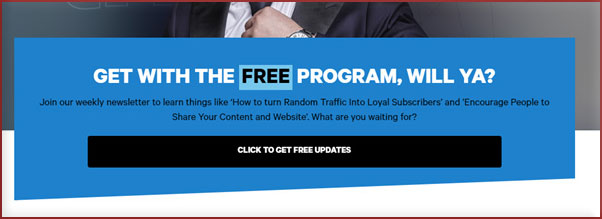

Once you open the page of Social Triggers, you encounter this CTA just below the header. Hard to miss – right?
It is strong enough to intrigue visitors to act…


This CTA on Basecamp’s page can trigger anyone to hit the yellow button. After all, if 7,035 companies have signed in, you wouldn’t want to be left.
It is simple and clear so that visitors know what to do…
This CTA on the page of Word Stream clearly tells and in simple words what to do and why you should do it. You don’t need to think much to hit the orange button!
STEP 6: Shout Out Your Unique Selling Points
If you are a goose in the flock of ducks, SAY IT LOUDER!
Your unique selling propositions are what make you stand out among your competitors.
In simple words, USPs are basically points that tell your readers…
- How are you different from others?
- What do you have that others are lacking?
- Why should people go to you instead of your competitors?
Whether it is your prices, a new product, better product quality, or guarantee, tell them…
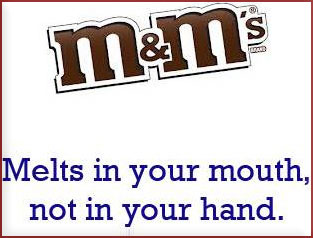

M&Ms’ slogan “The milk chocolate melts in your mouth, not in your hand” is one of the best examples of USP. It is quirky, attractive… and M&Ms uses it well to stand out.
STEP 7: Prove Your Worth
You have jotted down your benefits, mentioned your USP. Great!
But what if your visitor still can’t decide anything?
You can understand it this way…
You liked the product. You are sure that it goes with your needs, but… you still can’t decide whether you should buy it or not.
What do you do then? You…
Check online reviews.
Look out for ratings.
See testimonials.
Why? Because they are proof of that product/service’s value and worth.
You should also do that.
Add proofs on your website.
Testimonials, results, samples, case studies… all are great proves. Go with them!
For example, Zendesk has a pretty compelling testimonial page.
With big brands mentioned, anyone can feel like saying ‘yes’ to Zendesk after visiting this page.
STEP 8: Don’t Forget Visual Appeal
Design your content…
Now you might think that there is a typo issue because we write content, not design. But in the online world, you also design your content.
According to Zabisco, 40% of online consumers will show a better response to visual content than simple plain text.
Getting attention from today’s digital consumers is challenging. They have so many options that you have to work on every possible option to get their attention.
So, add on your website…
- Videos
- Sliders
- Infographics
But make sure that the visual content is goal-oriented, relevant, and resonates with the audiences.
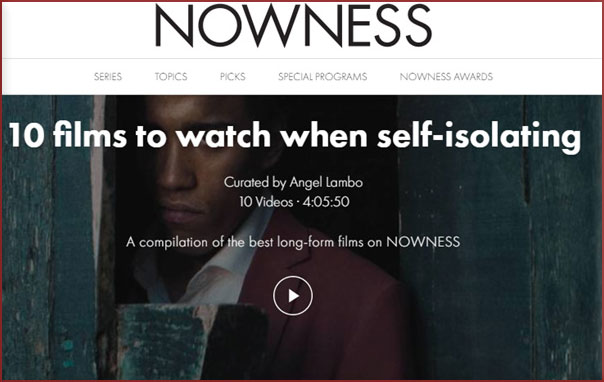

Nowness got the Best Cultural Blog Award in 2017… and you can see why?
It has visually appealing videos and images, and you feel like scrolling down without giving it a second thought.
That’s what you should do too:
BONUS TIP: Don’t Miss Out on Google!
While focusing on goals and audiences as you explore what is website content writing, don’t forget about Google.
Google is still here…
SEO is not going anywhere…
The search engine ranking race is not dead…
Obviously, no matter how stunning your website is, if you are not showing in Google’s top SERP, no one will bother you.
In short, you still have to feed Google.
And what does Google need?
According to Andrey Lipattsev, Google’s Search Quality Senior Strategist, high-quality content is one of the top signals for Google algorithms.
So Google wants high-quality content from you.
When Rand Fishkin says,
“Better content is out weighing more content.”
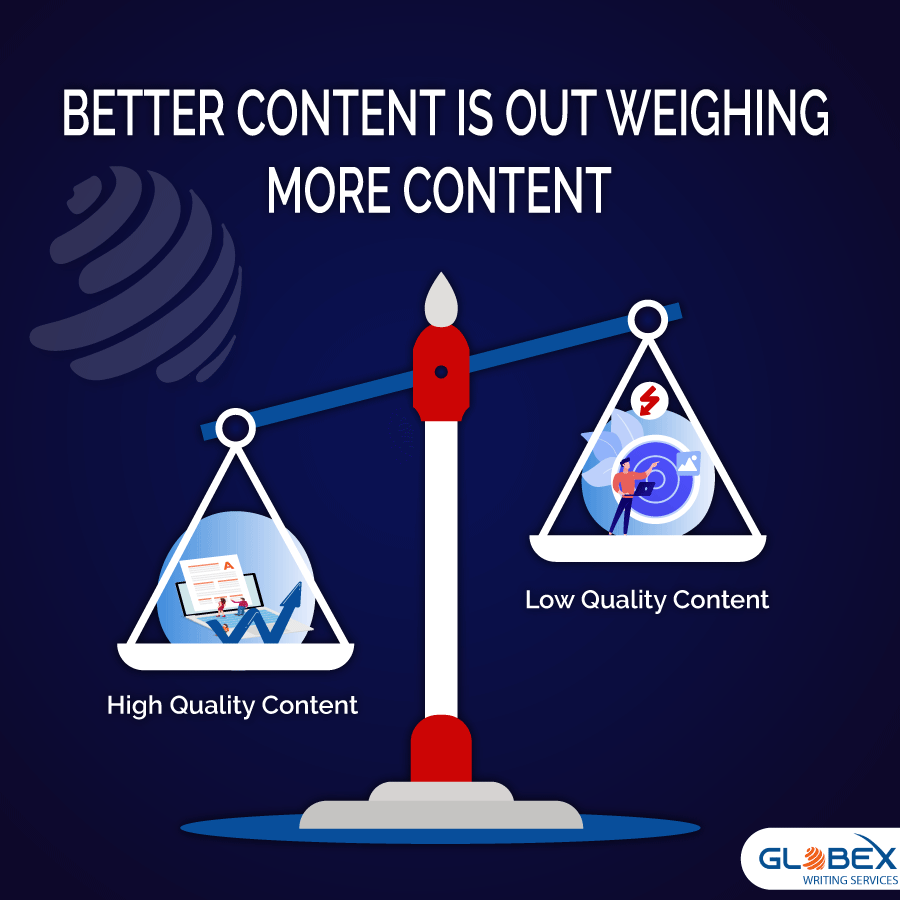

…he is right!
Instead of stuffing your content with keywords, and pointless things, come up with better and value-oriented content.
Just because of what Wendy Piersall says,
“Google only loves you when everyone else loves you first.”
If you want to be loved by Google, make sure you make your customers love you.
Conclusion
Website content writing in 2021 is going to be nothing but a value-oriented and customer-focused bonanza.
Focus on giving the best value and solutions to your customers, and good website content comes automatically.
Website content writing template and website content writing tools can help you in fine-tuning your work, but first, you have to play the right cards to get the best results.
Now you know what is website content writing. So what are you waiting for?
Let’s dive in and share with us how these website content writing tips helped you out.




Leave a Comment